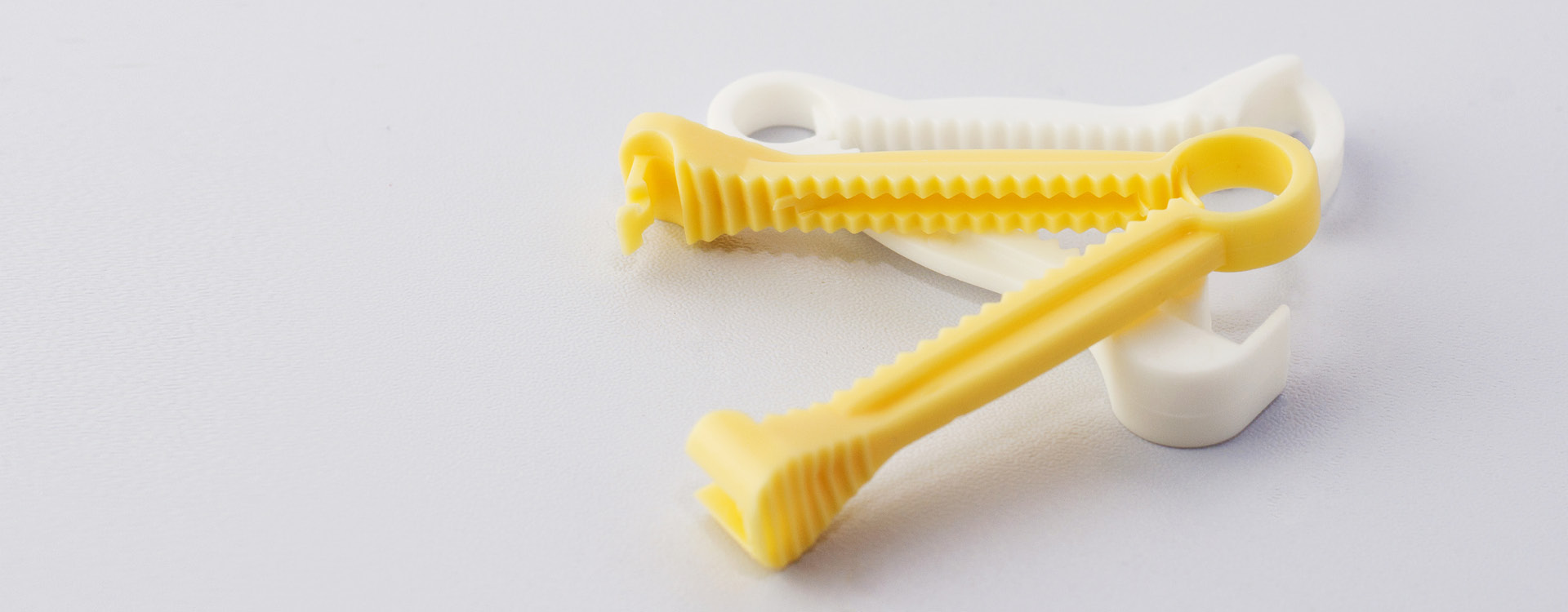The short answer is, the cord is clamped and cut, leaving a stump that falls off 5-15 days later. The mother’s portion is expelled with the placenta. The part of the cord in between may be harvested for life-saving stem cells. But that’s only part of the story.
The journey of the umbilical cord after birth has fluctuated dramatically over time as researchers have sought better health outcomes for newborns and their mothers across a wide range of scenarios (pre-term, term, and Cesarean births).
For instance, it may surprise you to learn that the timing of when the cord should be clamped has been debated for more than 2,000 years [*]. And that’s just one twist on the winding road the umbilical cord has traveled.
Should the cord be clamped immediately after birth, delayed, or milked? Is the postnatal umbilical cord just medical waste or still a source of life?
Answers to these questions guide the umbilical cord’s journey. Let’s start at the beginning.
What Is the Umbilical Cord For?
The umbilical cord is the baby’s lifeline and this is the one constant in the story. It carries precious nutrients and oxygen from the mother to the baby and delivers deoxygenated blood and waste back to the placenta.
It forms at around five weeks gestation and at full term measures between 20-24”. It contains two umbilical arteries and one umbilical vein leading to the placenta and is covered in a thick, gelatinous substance called Wharton’s Jelly, which makes the cord sufficiently robust to avoid getting crimped in the womb. In late-term, the umbilical cord also carries antibodies to the fetus that bolster its immune system.
What Happens to the Umbilical Cord During Birth?
Whether delivered vaginally or by Cesarean, the cord is clamped in two places to stop blood from flowing in either direction and then cut following the birth, severing the baby’s connection to the placenta. The placenta will come out shortly thereafter. Neither mother nor baby feels pain when the cord is clamped or cut.
The baby’s portion of the cord will dry after a few days, and the clamp can be removed when that occurs. The stump of the cord will continue to dry and shrink, sometimes turning black, before it falls off completely in the next week or two to reveal the baby’s belly button.
The mother’s portion will be ejected with the spent placenta. Not to worry, each successive child will have its own umbilical cord.
Does It Matter When the Cord Is Clamped?
The question of when to clamp the cord has been debated for centuries and continues to be debated and studied as it applies to term and pre-term infants, as well as those delivered vaginally or by Cesarean. Here’s why:
At term, about a third of the fetus’s blood supply lives in the placenta. With the intense uterine contractions during labor and delivery, this blood is transfused from the placenta to the newborn, but that process doesn't stop the minute the newborn emerges — it continues for 1-3 minutes just after birth, delivering around 3 more ounces of blood to the newborn.
Delayed cord clamping (DCC) is the term for waiting for a period of time before clamping and cutting the cord. The additional blood from this procedure supplies iron to the baby to support their brain growth and development in their first few months and may offset the potential for complications in the first year of life [*].
Interestingly enough, delayed cord clamping was the standard of care in the 1950s until a series of blood volume studies argued for immediate clamping. In the last decade, the pendulum has swung back to favor DCC for all births, with delaying for at least 30-60 seconds being the recommended amount of time by the American College of Nurse-Midwives and the World Health Organization. That said, there remains some apprehension as to the feasibility of DCC in scenarios where the baby must be resuscitated [*].
What Is Cord Milking?
In scenarios where the cord must be clamped before the baby might get its full blood volume, umbilical cord milking may be performed. Here, the umbilical cord (clamped or unclamped) is grasped and the blood is pushed 2-4 times towards the newborn to promote the flow of blood from the placenta. (Some studies describe doing this quickly, in the span of 20 seconds or so, while others describe it as a slow and methodical pulsing.)
According to a 2019 study, researchers found no difference in blood volume between infants undergoing cord milking and those undergoing delayed cord clamping among women who had vaginal births [*].
Women having a Cesarean birth are less likely to be afforded the option of DCC for more than 30-60 seconds, according to a 2020 study, but a novel method — removing the placenta before cord clamping to allow for up to 3-5 minutes of delayed cord clamping — was effective [*].
That said, women having a Cesarean birth, and especially preterm, are likely to gain more benefits from cord milking versus DCC. These benefits include greater blood flow to and from the baby’s heart, higher red blood cell levels, and higher blood pressure [*].
Is the Umbilical Cord Discarded After Birth?
Yes and no. You might think, after nourishing an infant for 9 months, infusing that newborn with placental blood during birth, then being clamped or milked and then cut, the umbilical cord’s journey is over. Not yet! The part of the cord cut between mother and baby still has a role to play.
Once considered a biological waste product, the umbilical cord blood and tissue is today recognized as a precious source of life-saving stem cells that can be used for the child, their siblings and families, or even compatible strangers [*].
The idea of saving placental blood for later transfusion dates back to 1939 [*]. The first cord blood stem cell transplant was performed in 1988 in Paris, France, for a 5-year-old boy named Matthew Farrow who had Fanconi anemia, a genetic and potentially life-threatening form of anemia; The donor was his newborn sister. Today, Matthew Farrow is 39, married, and a father, as well as an advocate for cord blood awareness.
In the last 30 years, cord blood stem cells (hematopoietic stem cells, or HSCs) have been used in more than 25,000 successful transplants to treat 80+ diseases, with hundreds more in clinical trials.
Cord tissue is also breaking new ground in regenerative medicine treatments. Cord tissue stem cells (Mesenchymal Stem Cells, or MSCs) are very different from those found in cord blood. They’re found in the Wharton’s Jelly and perivascular regions of the umbilical cord and can differentiate into a variety of cell types, including bone, cartilage, muscle, and nerve cells.
Whether you opt to bank these precious umbilical cord resources privately or donate the cord blood (where possible), cord blood and tissue are collected between the time the cord is cut and the placenta is delivered. The process only takes about five minutes, and there is no risk or pain to mother or child.
MiracleCord uses a medical courier to take transport the collected cord blood and tissue on the next flight out directly to our accredited lab, where it will be tested and processed without delay, which maximizes the number and viability of the collected cells. They are then cryogenically stored, a detailed lab report is sent to you, and the stem cells are retrievable quickly when the child or a family member needs them.
Stem cells that have been cryogenically stored for more than 26 years have been proven to still be completely viable. In fact, there is no known expiration date for cord blood and tissue stem cells stored cryogenically.
In that sense, the umbilical cord’s journey never really ends.
The Bottom Line
The umbilical cord has an incredible role to play in the life and health of the child. Researchers continue to study ways to maximize its benefits to newborns and their mothers during the birth process and after.
While it can be discarded as postnatal medical waste for those who opt to do so, it has the potential to continue its journey across generations as a precious source of life-saving stem cells.
If you would like to learn more about cord blood and tissue banking for your family, feel free to request our free information kit today.
DISCLAIMER: THE INFORMATION ON THIS WEBSITE IS NOT INTENDED TO BE USED AS MEDICAL ADVICE.The materials and information contained on the MiracleCord website is provided for educational and informational purposes only, and is not intended to, and does not constitute, medical or other health advice or diagnosis, and should not be used as such. You should not use this information to diagnose or treat a health problem or disease. If you are seeking personal medical advice, you should consult with a licensed physician. Always consult with a qualified health care provider regarding a medical condition.




